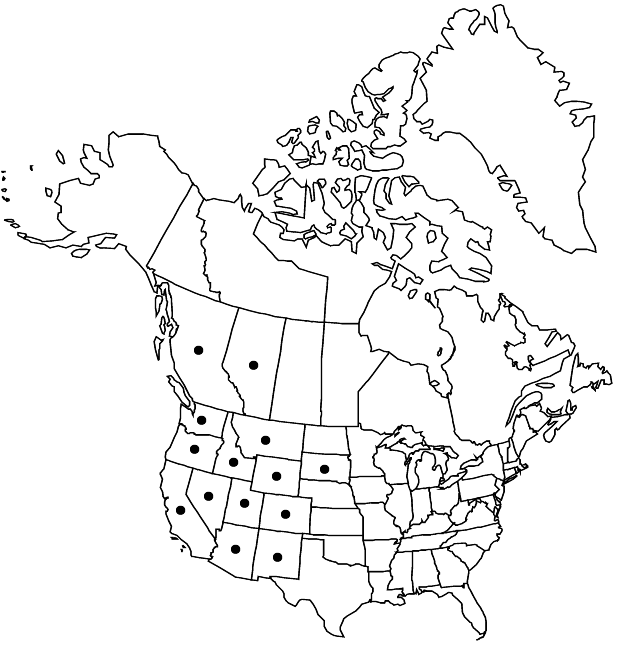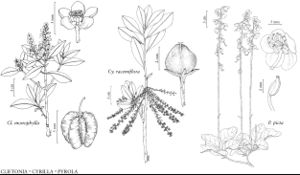Difference between revisions of "Pyrola picta"
in A. Rees, Cycl., 29: Pyrola no. 8. 1814 ,.
FNA>Volume Importer |
FNA>Volume Importer |
||
| Line 11: | Line 11: | ||
|name=Pyrola aphylla | |name=Pyrola aphylla | ||
|authority=Smith | |authority=Smith | ||
| − | }}{{Treatment/ID/Synonym | + | }} {{Treatment/ID/Synonym |
|name=Pyrola dentata | |name=Pyrola dentata | ||
|authority=Smith | |authority=Smith | ||
| − | }}{{Treatment/ID/Synonym | + | }} {{Treatment/ID/Synonym |
|name=Pyrola dentata var. integra | |name=Pyrola dentata var. integra | ||
|authority=A. Gray | |authority=A. Gray | ||
| − | }}{{Treatment/ID/Synonym | + | }} {{Treatment/ID/Synonym |
|name=Pyrola picta subsp. dentata | |name=Pyrola picta subsp. dentata | ||
|authority=(Smith) Piper | |authority=(Smith) Piper | ||
| − | }}{{Treatment/ID/Synonym | + | }} {{Treatment/ID/Synonym |
|name=Pyrola picta var. dentata | |name=Pyrola picta var. dentata | ||
|authority=(Smith) Dorn | |authority=(Smith) Dorn | ||
| − | }}{{Treatment/ID/Synonym | + | }} {{Treatment/ID/Synonym |
|name=Pyrola picta subsp. integra | |name=Pyrola picta subsp. integra | ||
|authority=(A. Gray) Piper | |authority=(A. Gray) Piper | ||
| Line 41: | Line 41: | ||
|elevation=400-3000 m | |elevation=400-3000 m | ||
|distribution=Alta.;B.C.;Ariz.;Calif.;Colo.;Idaho;Mont.;Nev.;N.Mex.;Oreg.;S.Dak.;Utah;Wash.;Wyo. | |distribution=Alta.;B.C.;Ariz.;Calif.;Colo.;Idaho;Mont.;Nev.;N.Mex.;Oreg.;S.Dak.;Utah;Wash.;Wyo. | ||
| − | |discussion=<p>E. Haber (1987) concluded that Pyrola picta, P. aphylla, and P. dentata are morphotypes of a single, highly variable species, a finding consistent with seed morphology data compiled by Hiroshi Takahashi (1993). Leafless scapes frequently are found attached to rhizomes bearing leafy shoots (W. H. Camp 1940; Haber 1987). Putative hybrids between P. picta and P. chlorantha have been reported at three locations in the western United States (Haber 1993). Cladistic analyses of molecular and morphologic data suggest that P. picta is sister to P. chlorantha (J. V. Freudenstein 1999b), which also occasionally is leafless.</p> | + | |discussion=<p>E. Haber (1987) concluded that <i>Pyrola picta</i>, P. aphylla, and P. dentata are morphotypes of a single, highly variable species, a finding consistent with seed morphology data compiled by Hiroshi Takahashi (1993). Leafless scapes frequently are found attached to rhizomes bearing leafy shoots (W. H. Camp 1940; Haber 1987). Putative hybrids between <i>P. picta</i> and <i>P. chlorantha</i> have been reported at three locations in the western United States (Haber 1993). Cladistic analyses of molecular and morphologic data suggest that <i>P. picta</i> is sister to <i>P. chlorantha</i> (J. V. Freudenstein 1999b), which also occasionally is leafless.</p> |
|tables= | |tables= | ||
|references={{Treatment/Reference | |references={{Treatment/Reference | ||
| Line 68: | Line 68: | ||
|publication year= | |publication year= | ||
|special status= | |special status= | ||
| − | |source xml=https://jpend@bitbucket.org/aafc-mbb/fna-data-curation.git/src/ | + | |source xml=https://jpend@bitbucket.org/aafc-mbb/fna-data-curation.git/src/8f726806613d60c220dc4493de13607dd3150896/coarse_grained_fna_xml/V8/V8_724.xml |
|subfamily=Ericaceae subfam. Monotropoideae | |subfamily=Ericaceae subfam. Monotropoideae | ||
|genus=Pyrola | |genus=Pyrola | ||
Revision as of 18:08, 18 September 2019
Plants rhizomatous, (0.5–)1.5–4.6 dm. Leaves sometimes highly reduced or absent; petiole 4–25 mm, channeled adaxially, glabrous; blade usually maculate, sometimes not maculate, dull and light green to purplish abaxially, dull or shiny and green to dark green, usually with white tissue bordering larger veins adaxially, ovate or ovate-elliptic to oblanceolate or spatulate, 8–80 × 4–49 mm, coriaceous, base obtuse to attenuate or decurrent, margins entire or denticulate to coarsely denticulate, apex obtuse to acute. Inflorescences 1–2(–3), 4–24-flowered; peduncular bracts 1–5, subulate to narrowly lanceolate, 3–9 × 1–2 mm, membranous, margins entire or erose-denticulate; inflorescence bracts subulate to ovate-lanceolate, usually shorter than or, rarely, longer than subtended pedicels, 3.5–6 × 2–3 mm, herbaceous. Pedicels 3–18 mm. Flowers: calyx lobes appressed or spreading in fruit, green with margins hyaline to white or pinkish, widely deltate to widely ovate, 1.1–3.9 × 1.1–2.4 mm, margins entire or erose-denticulate, apices acute; petals greenish white, white, pink, or reddish, obovate, 4.2–11.2 × 3.1–7.1 mm, margins entire or obscurely denticulate; stamens 5–9 mm; filament base 0.5–0.8 mm wide; anthers 1.8–5.5 mm, apiculations absent or 0.1–0.2 mm, thecae creamy white to pink, tubules orange, 0.4–0.8 mm, gradually narrowed from thecae, lateral walls usually touching for most of their lengths, pores 0.1–0.3 × 0.1–0.2 mm; ovary smooth; style exserted, 4–9 mm; stigma (0.8–)1–1.6 mm wide, lobes erect. Capsules depressed-globose, 3–6 × 6–9 mm. 2n = 46.
Phenology: Flowering Jun–Aug.
Habitat: Dry, coniferous forests
Elevation: 400-3000 m
Distribution

Alta., B.C., Ariz., Calif., Colo., Idaho, Mont., Nev., N.Mex., Oreg., S.Dak., Utah, Wash., Wyo.
Discussion
E. Haber (1987) concluded that Pyrola picta, P. aphylla, and P. dentata are morphotypes of a single, highly variable species, a finding consistent with seed morphology data compiled by Hiroshi Takahashi (1993). Leafless scapes frequently are found attached to rhizomes bearing leafy shoots (W. H. Camp 1940; Haber 1987). Putative hybrids between P. picta and P. chlorantha have been reported at three locations in the western United States (Haber 1993). Cladistic analyses of molecular and morphologic data suggest that P. picta is sister to P. chlorantha (J. V. Freudenstein 1999b), which also occasionally is leafless.
